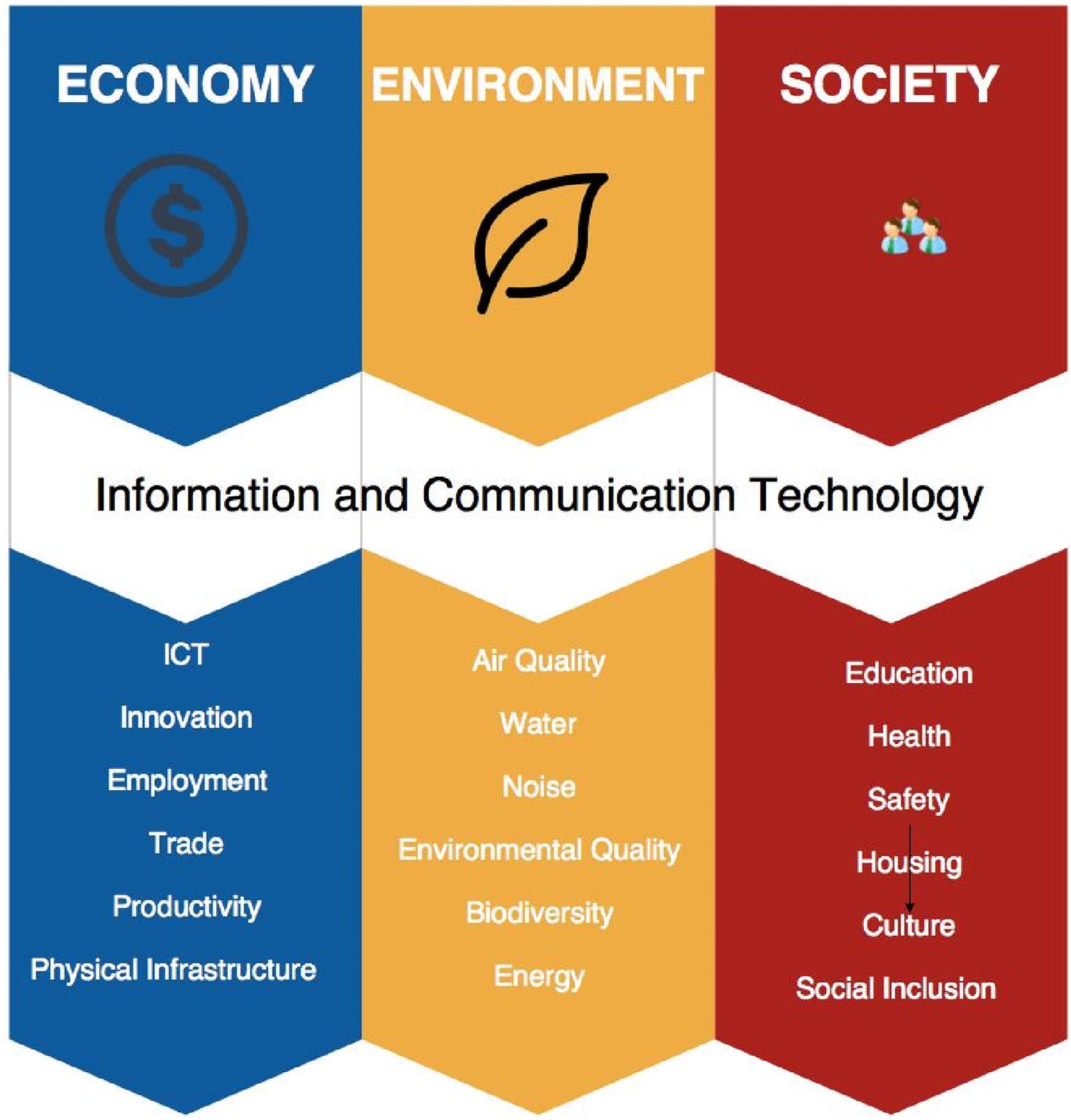Elsevier, Sustainable Cities and Society, Volume 44, January 2019
There has recently been a conscious push for cities in Europe to be smarter and more sustainable, leading to the need to benchmark these cities’ efforts using robust assessment frameworks. This paper ranks 28 European capital cities based on how smart and sustainable they are. Using hierarchical clustering and principal component analysis (PCA), we synthesized 32 indicators into 4 components and computed rank scores. The ranking of European capital cities was based on this rank score.
Elsevier, Trends in Ecology and Evolution, Volume 34, January 2019
Global biodiversity targets have far-reaching implications for nature conservation worldwide. Scenarios and models hold unfulfilled promise for ensuring such targets are well founded and implemented; here, we review how they can and should inform the Aichi Targets of the Strategic Plan for Biodiversity and their reformulation. They offer two clear benefits: providing a scientific basis for the wording and quantitative elements of targets; and identifying synergies and trade-offs by accounting for interactions between targets and the actions needed to achieve them.
Elsevier, Journal of the Saudi Society of Agricultural Sciences, Volume 18, January 2019
Brassica carinata (Ethiopian mustard) could be a potential oilseed species for the semiarid tropics but no work has been done to explore the agronomic potential of the crop. Besides that, there is very little chance for horizontal growth of the crop as land is shrinking due to population growth in South-East Asia. Thus, the traditional practice of mixed cropping has gained popularity in recent years in the form of intercropping with a suitable modification in planting pattern.
Elsevier, Ecological Modelling, Volume 391, 10 January 2019
Using a consumption-based Multi-Regional Input-Output (MRIO) model, we investigate the distinctive characteristics, self-efficiency or external dependency, of energy demand's water footprint in China's two biggest and fastest developing megalopolises. We find that energy demand water footprint in the Jing-Jin-Ji and the Yangtze Delta amounted to 2.41 and 9.59 billion m³of water withdrawal respectively in 2010, of which 848.06 and 973.91 million m³was consumed. Among all energy products, electricity contributed the largest share to the energy sector's water footprint in both regions.
Elsevier, Ecological Modelling, Volume 391, 10 January 2019
The world food price crisis in 2007/08 has aroused worldwide attention to the global food price volatility and food self-sufficiency issues. This paper modelled the entire environment of food production and transaction from a holistic view by a Food-Energy-Water (FEW) nexus in order to reveal the hidden connections related to the food self-sufficiency issue, including the interdependencies of food production with its restraining factors (hybrid energy, hybrid water), other production sectors, and international exchanges.
Elsevier, Marine Policy, Volume 99, January 2019
The current regime governing Areas Beyond National Jurisdiction (ABNJ) as a global commons has resulted in overutilization of fisheries resources and patchwork attempts to regulate resource extraction. States are looking to expand resource extraction in ABNJs, including marine genetic resources, creating pressures to regulate these activities. As a result, since 2004, the United Nations has been holding preparatory meetings to lay the groundwork for a new international legally binding instrument (ILBI) to address the gaps left by UNCLOS.
Elsevier, TrAC - Trends in Analytical Chemistry, Volume 110, January 2019
The current paper critically reviews the state-of-the-science on (1) microplastics (MP) types and particle concentrations in freshwater ecosystems, (2) MP and nanoplastics (NP) uptake and tissue translocation, (3) MP/NP-induced effects in freshwater organisms, and (4) capabilities of MP/NP to modulate the toxicity of environmental chemicals. The reviewed literature as well as new data on MP and NP concentrations in the river Elbe and on particle uptake into human cells indicate an environmental relevance of small particles in the low nano- and micrometer range higher than that of larger MP.
Elsevier, TrAC - Trends in Analytical Chemistry, Volume 110, January 2019
Microplastics are widespread contaminants, virtually present in all environmental compartments. However, knowledge on sources, fate and environmental concentration over time and space still is limited due to the laborious and varied analytical procedures currently used. In this work we critically review the methods currently used for sampling and detection of microplastics, identifying flaws in study design and suggesting promising alternatives.
Elsevier, TrAC - Trends in Analytical Chemistry, Volume 110, January 2019
Plastics entering the environment will persist and continue to degrade and fragment to smaller particles under the action of various environmental factors. These microplastics (MP) and nanoplastics (NP) are likely to pose a higher environmental impact, as well as they are more prone to adsorb organic contaminants and pathogens from the surrounding media, due to their higher surface area to volume ratio. Little known on their characteristics, fragmentation, distribution and impact on freshwater ecosystems.
Elsevier, Futures, Volume 105, January 2019
Degrowth scholars and activists have convincingly argued that degrowth in developed nations will need to be part of a global effort to tackle climate change, and to preserve the conditions for future generations’ basic needs satisfaction. However, the barriers to building a broader degrowth movement appear to be very entrenched at present. To improve the political feasibility of degrowth it is important to better understand these structural obstacles and develop arguments and strategies to address them.


